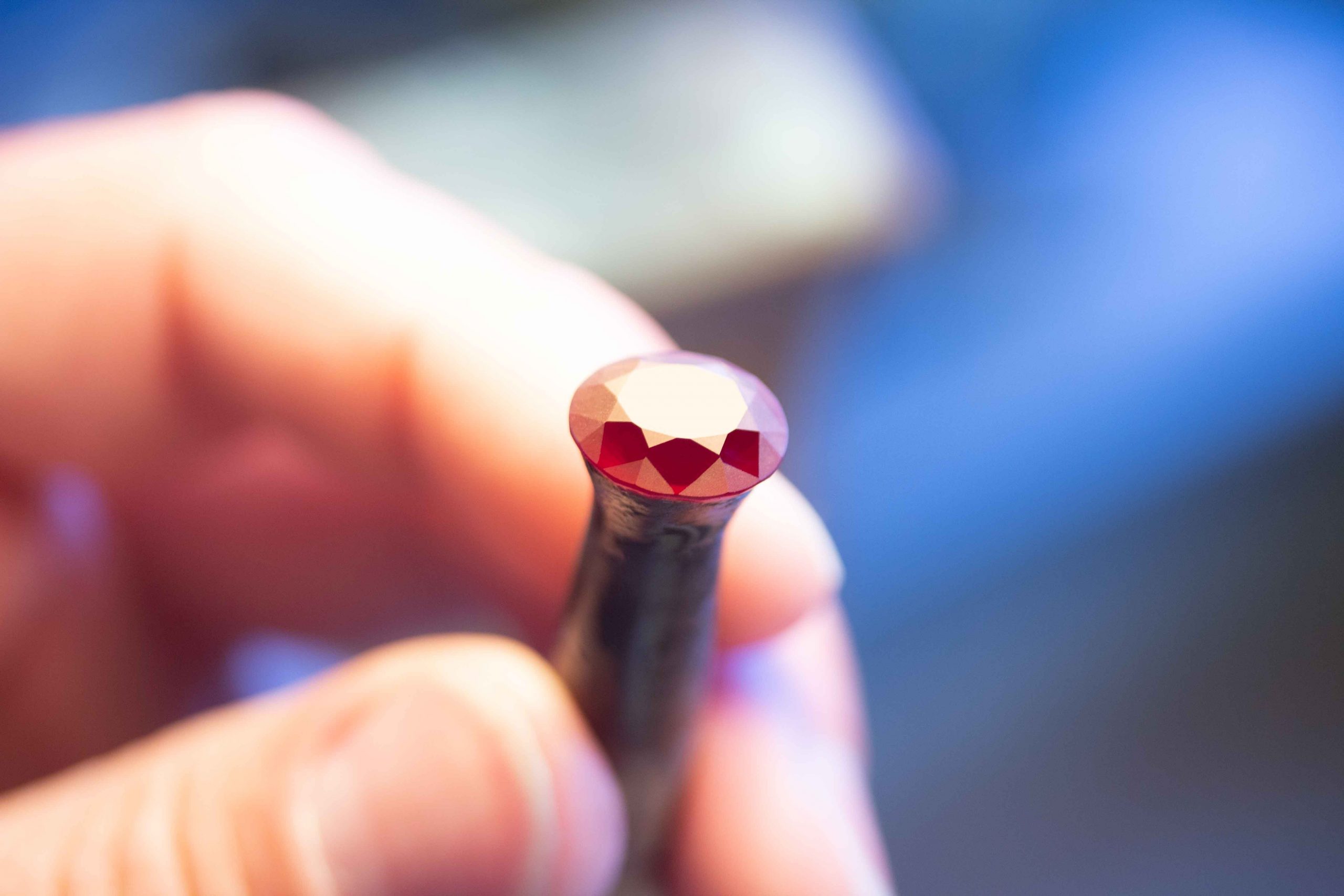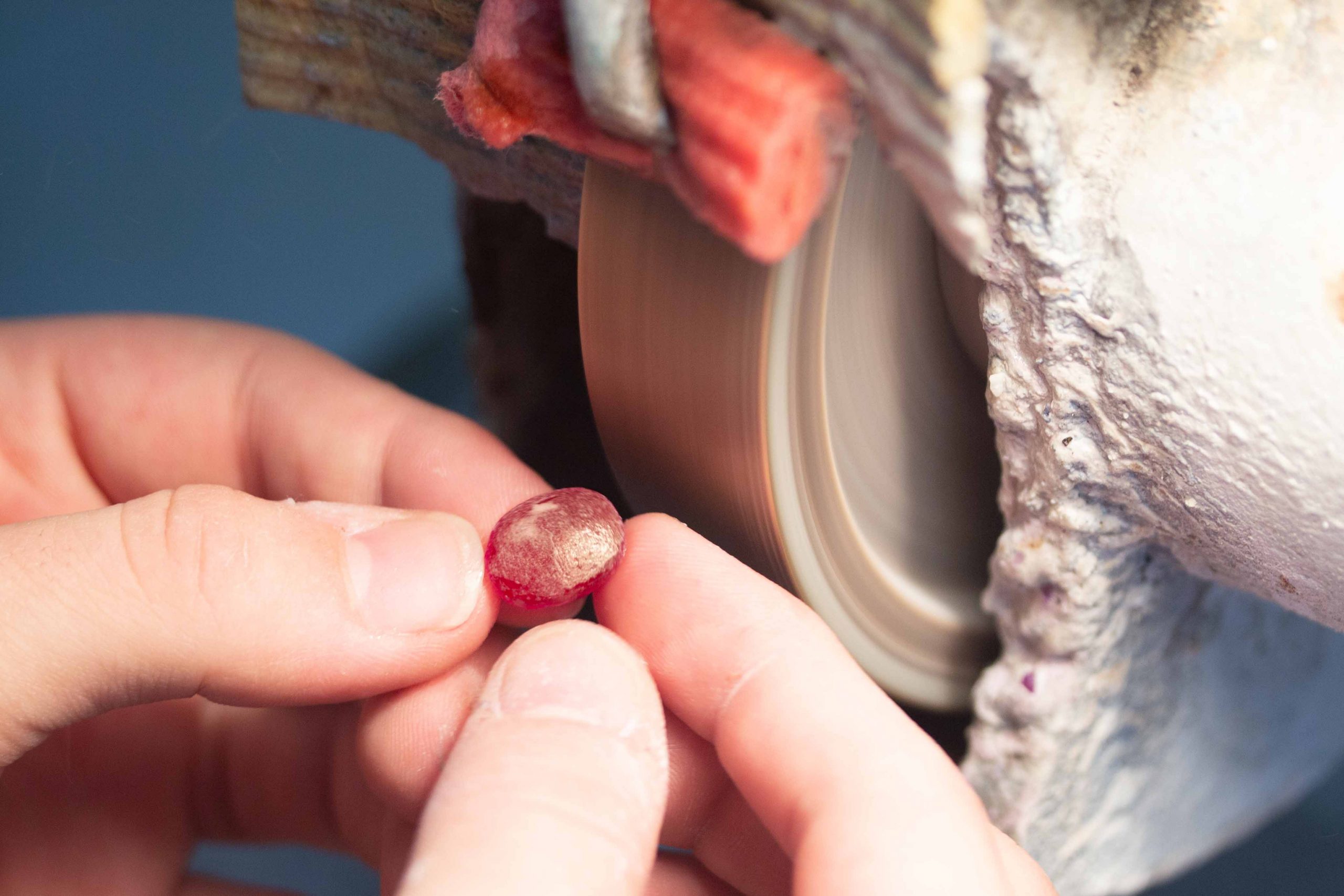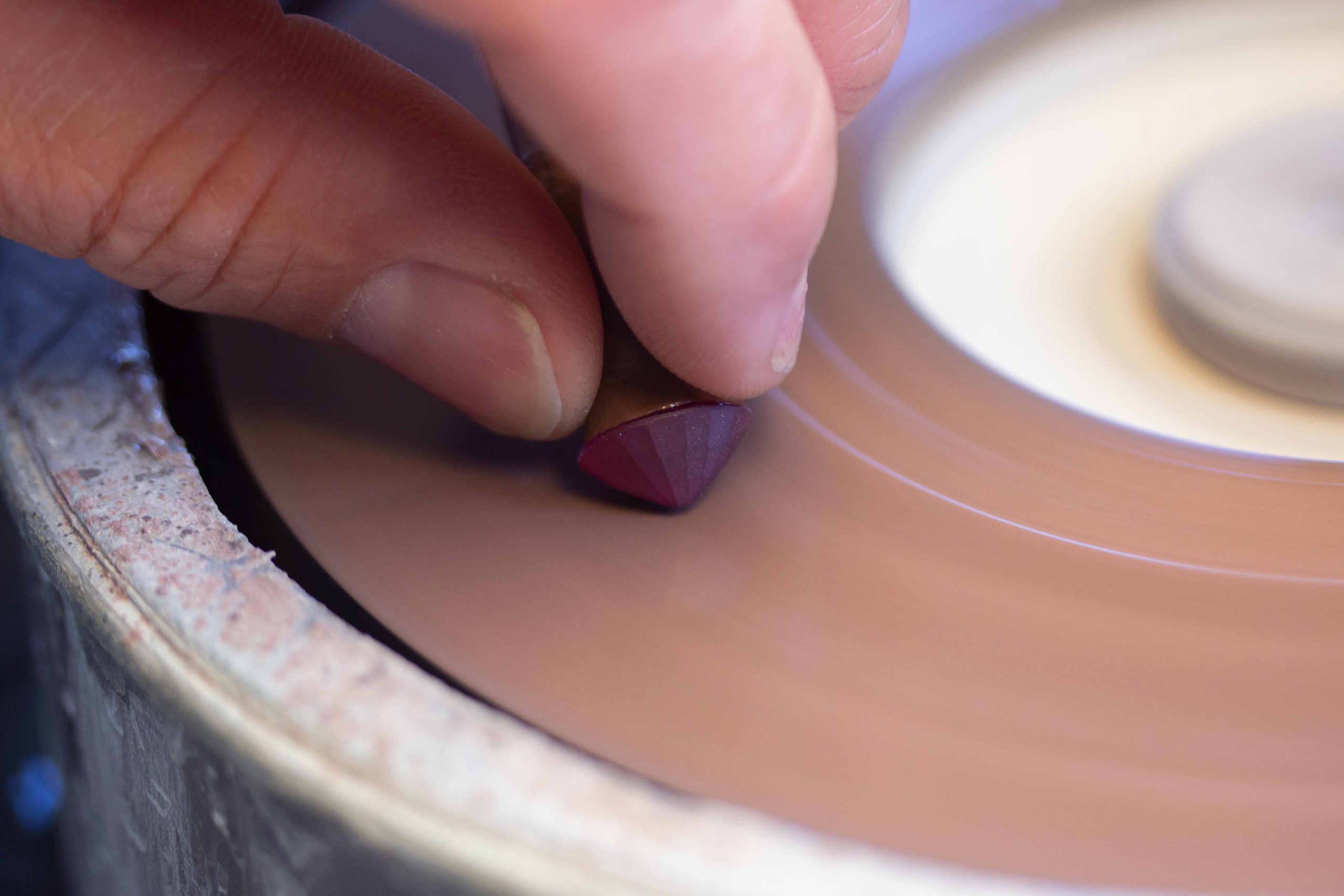Production
Our excellence

Production
Our excellence
Karl Faller lapidaries has long-standing business relations to the countries of origin, that allow us to source our rare products directly at the mines. Our special focus is on Sapphires of any possible colour variety, preferably blue, pink and Padparadscha as well as on Rubies and Emeralds.
Back home in our cutting workshop in Kirschweiler, Germany, our masters of cutting transform the rough or precut material into beautiful rarities. We still cut the gemstones in the traditional way by hand. After a perfect finish, the most valuable jewels are certified in famous Gem Labs, who underline the beauty and rareness of our creation.
Cutting & Ebouching
Production
Cutting & Ebouching
The first steps in creation of a gemstone is the cutting and ebouching of the rough stone. By a thorough inspection, the cutter determines the final shape and design of the finished jewel. Special attention and expert knowledge are needed during this process. Hidden cracks or inclusions, for example, may cause a breaking of the stone during cutting or polishing as well as inequalities in the colour distribution, which very often are apparent in sapphires, may lead to a loss of colour intensity and consequently to a significant decrease of value.
This is why the decision about the final shape and orientation of the finished gemstone are of decisive importance for the product. With regard to achieving the best creation of value, also the loss of weight during the whole cutting process should be minimized.

Cabochon
Production
Cabochon
In case the rough material or the ebouched stone shows a more opaque and less brilliant appearance, the cutter very often decides to make a cabochon instead of a facetted stone, where a very clear, clean and shining material is needed. A cabochon has a plain surface with a flat bottom and a curved top side. A perfect shining as well as the optimized orientation of the finished stone is also very important for cabochons.
This applies especially to star sapphires for an exact centering of the asterism. Cutting symmetric shapes freehanded is very complicated process and requests long term experience, special skills and creativity.

Faceting & Polishing
Production
Faceting & Polishing
The final touch on the way to a perfect result is the faceting and the polishing of the stone. The so-called facets are plane surfaces, which are cut in certain predetermined angles and orientations on the ebouched gemstone. The executive excellence of this process is the key for an optimal refraction of light and the unprecedented luster of the jewel. The accurate orientation and planarity of the facets as well as a perfect proportioning are decisive factors in this step. Quality criteria for a perfectly cut stone are for example the deepness of the body in relation to the dimensions of the table or the color saturation and brilliancy without the appearance of any windows or color zones. The polishing of the stone is the last but very sensitive and also very important step in the cutting process. Every single facet must be evenly smoothly polished without affecting the orientation of the surface given during faceting. Special care is of need even by highly experienced gemstone cutters to avoid a breaking of the rarity in the literally last minute and leading the whole effort to a failure. In our cutting workshop faceting and polishing are performed in the traditional way without any help of automatic machines. The stone is attached on the top of a wooden putty-stick and cut on a horizontally rotating wheel. The rear tip of the putty stick is fixed at a certain angle in a laterally mounted pegboard and thus determines the exact angle of the facet.
Gemstones can be cut in a variety of different shapes. Sapphires and rubies are mainly cut in oval or cushion shapes, whereas octagon shapes are very popular for emeralds or tourmalines. The main factor for the final design is the appearance and the crystalline structure of the rough stone. Corundum crystals, i.e. sapphires and rubies for example, provide the lowest loss of weight and the best result if cut in oval or cushion shapes, whereas beryllium crystals, i.e. emeralds, tourmalines, etc., are more suitable for an octagon cut. A highly sought-after design especially for smaller stones up to around one or two carats is the so-called round diamond cut. Even though this shape goes along with a high loss of weight leading to a substantially higher price per carat, the brilliance and fire of a diamond cut sapphire is unrivalled. A specialty of our company is the exact cutting in customized sizes to perfectly fit into existing settings like watches, rings, brooches, pins or any kind of antique jewellery.
Finally, for the inexperienced admirer of the breathtaking beauty of a finished jewel, it appears like magic to see an unimpressive little piece of crystal being transformed into one of the most desirable and valuable treasures of mother nature.


Results
Production
Results
